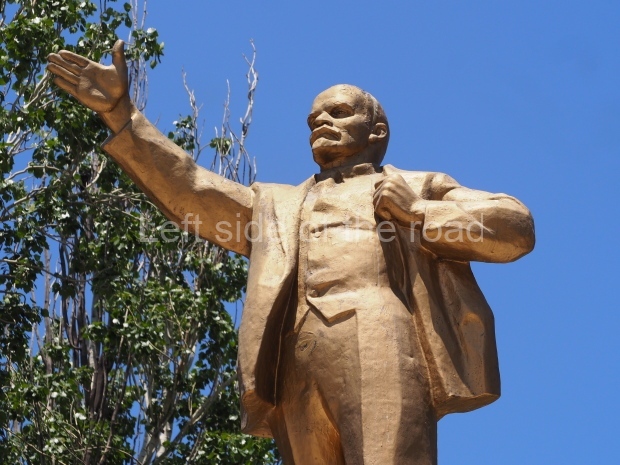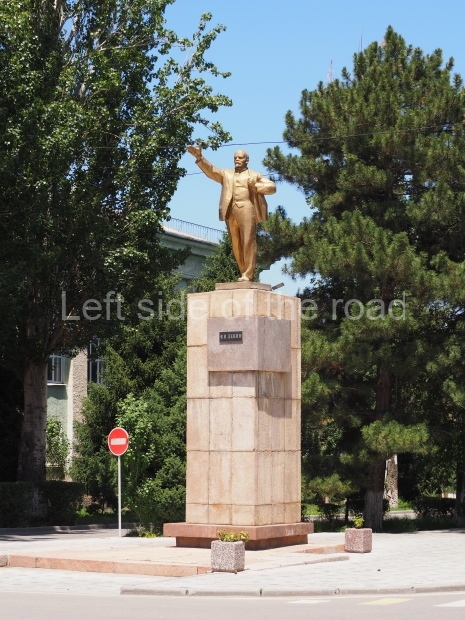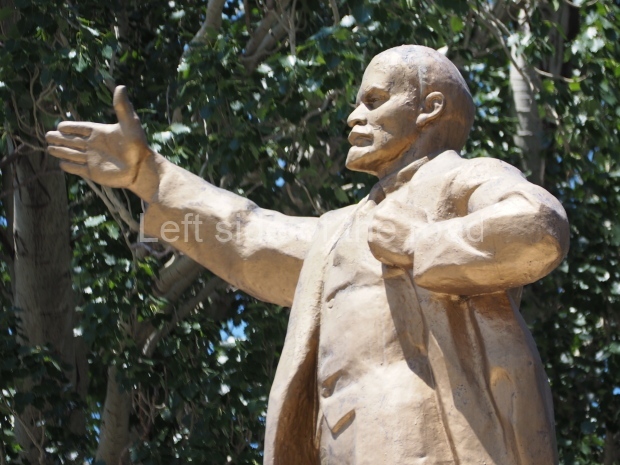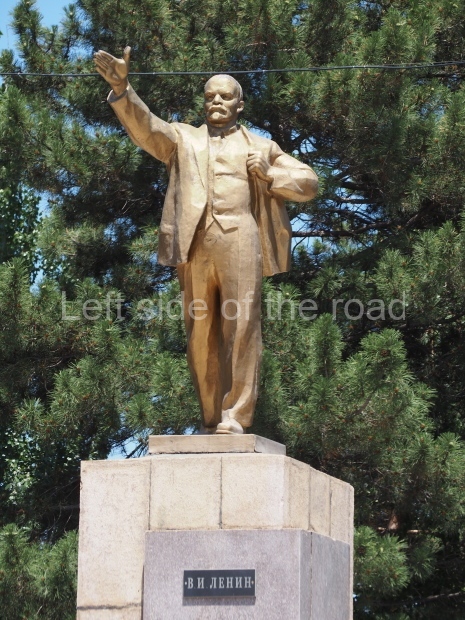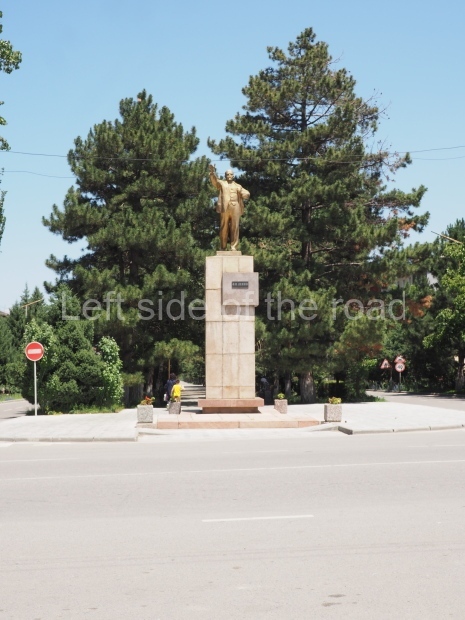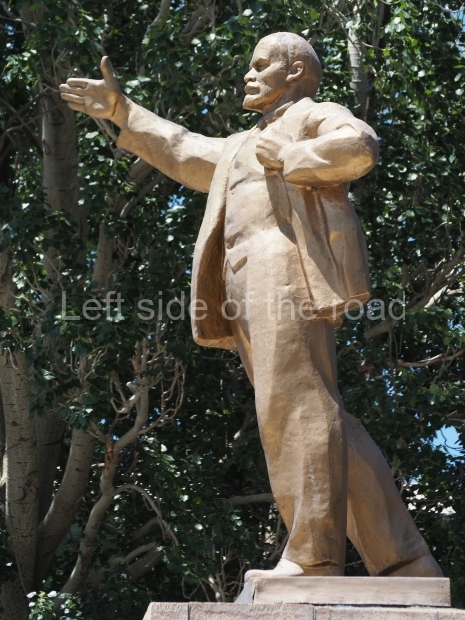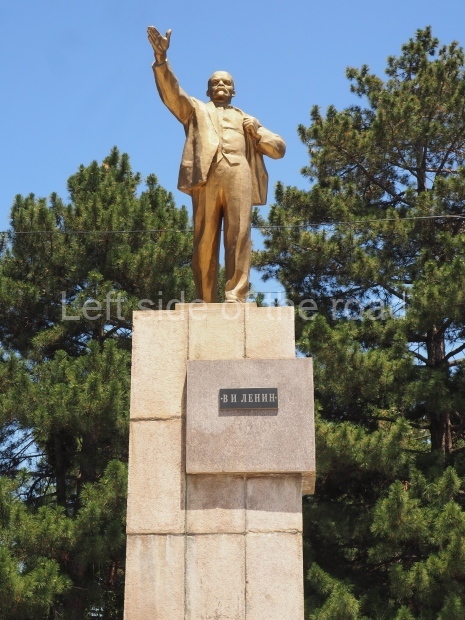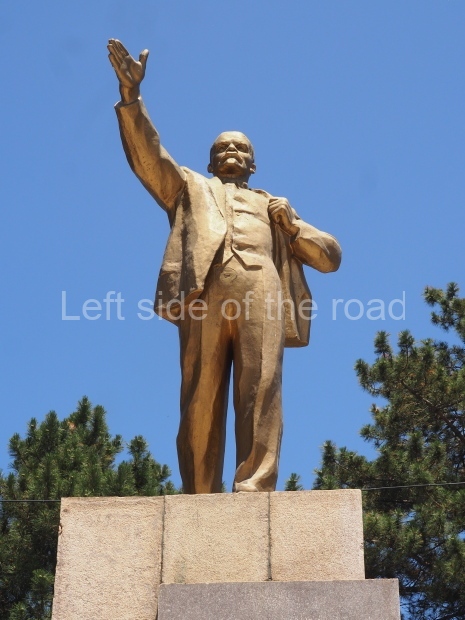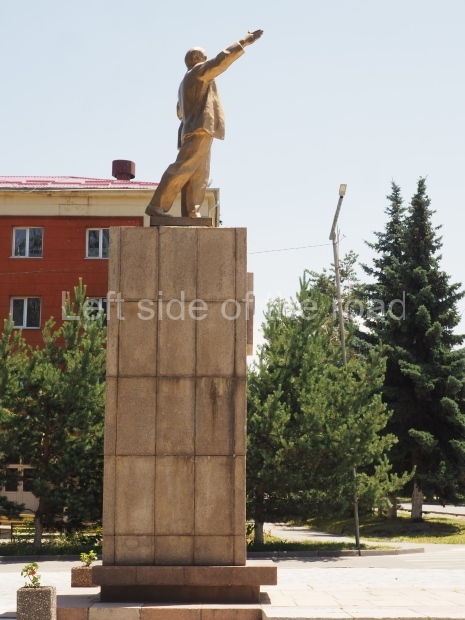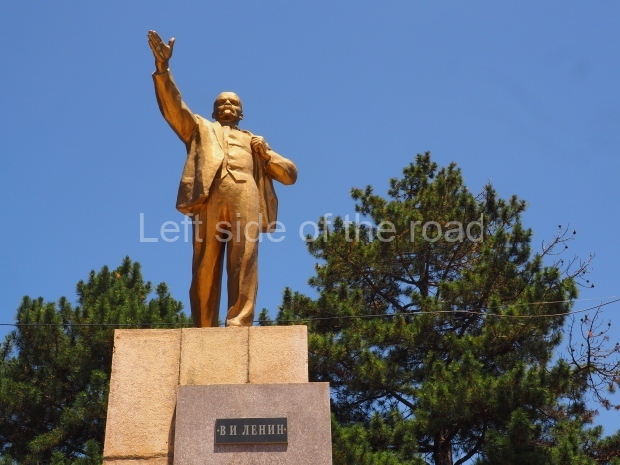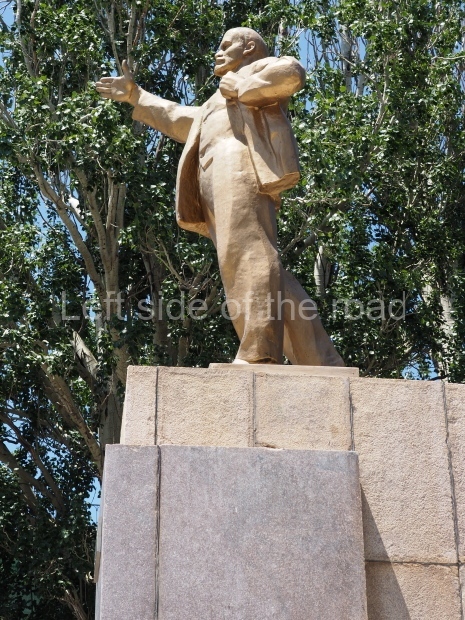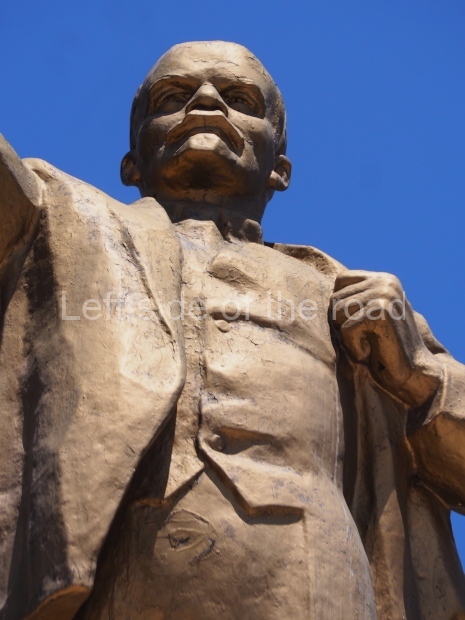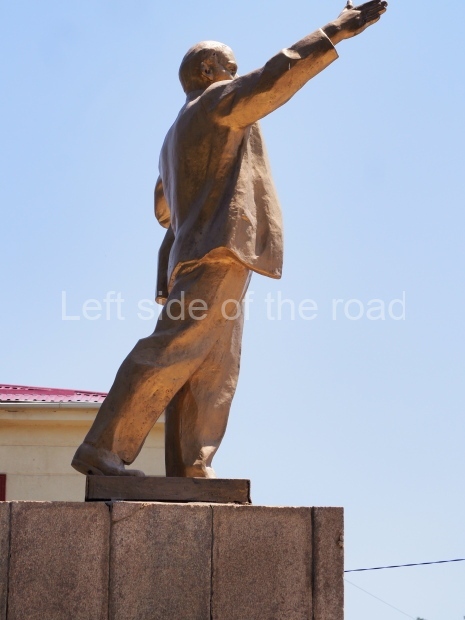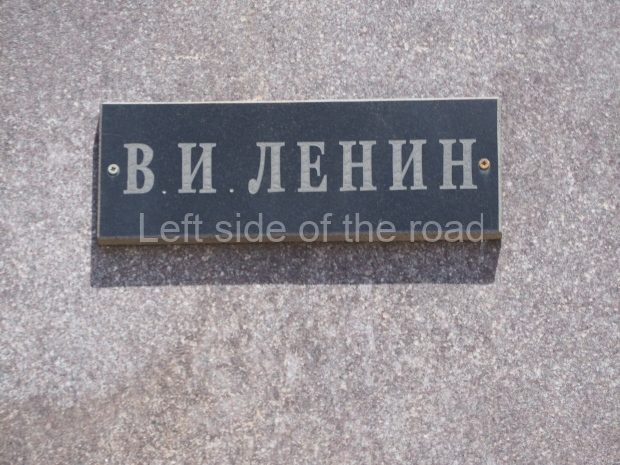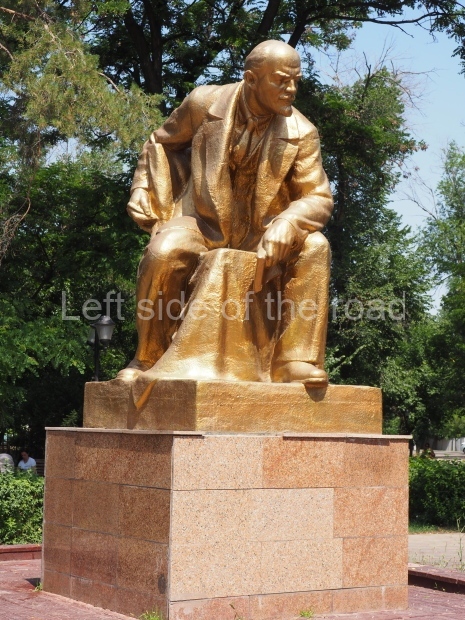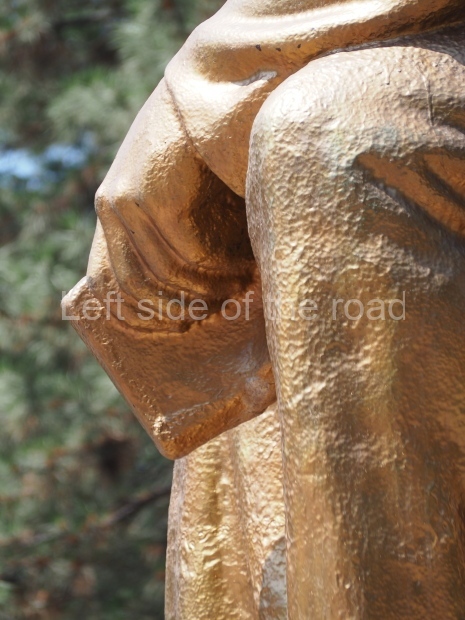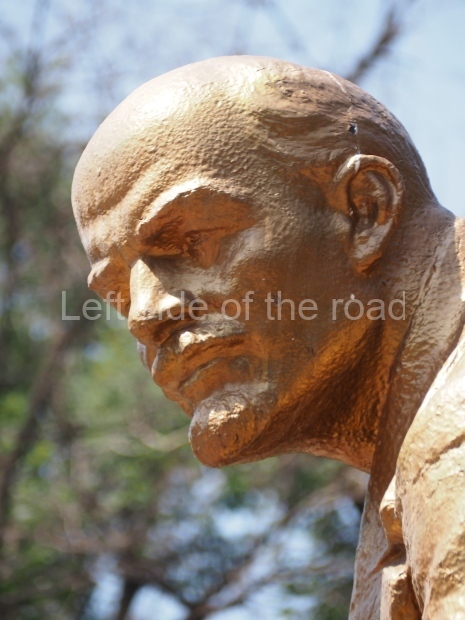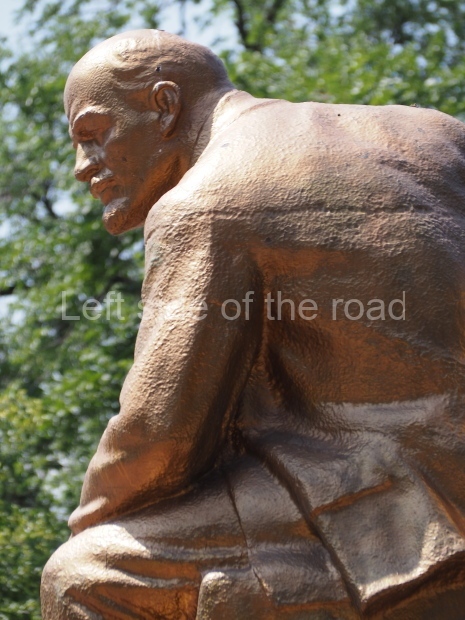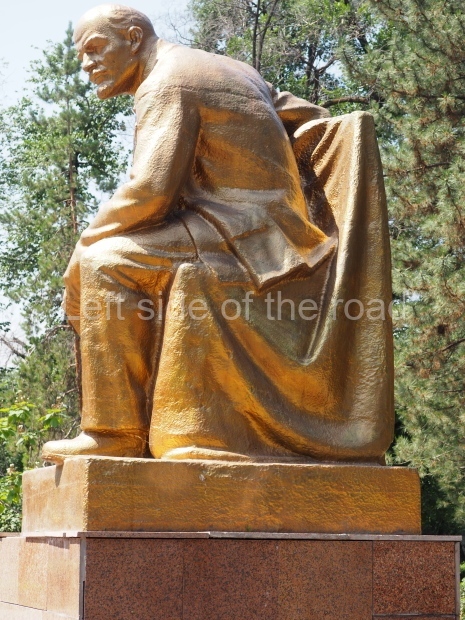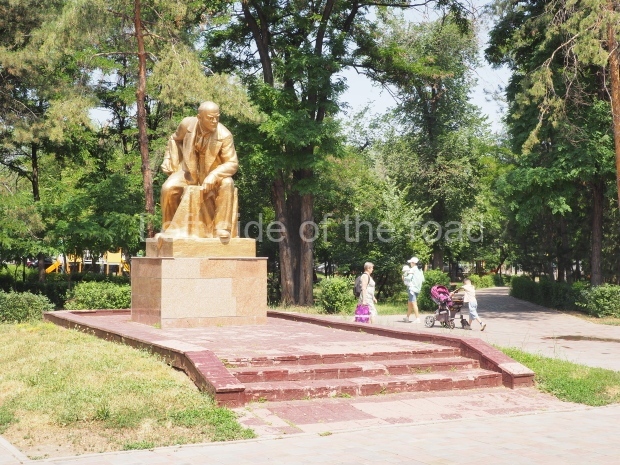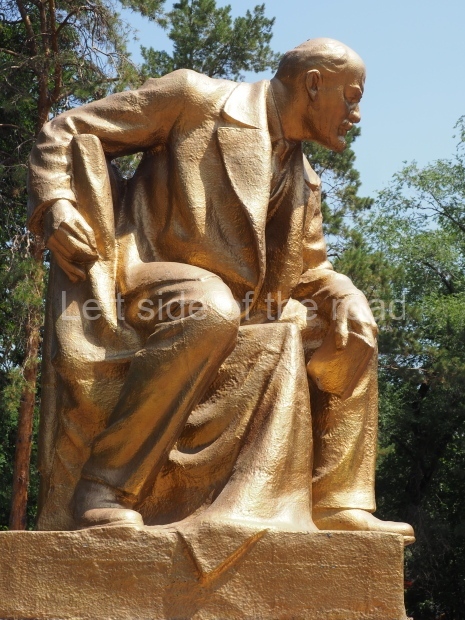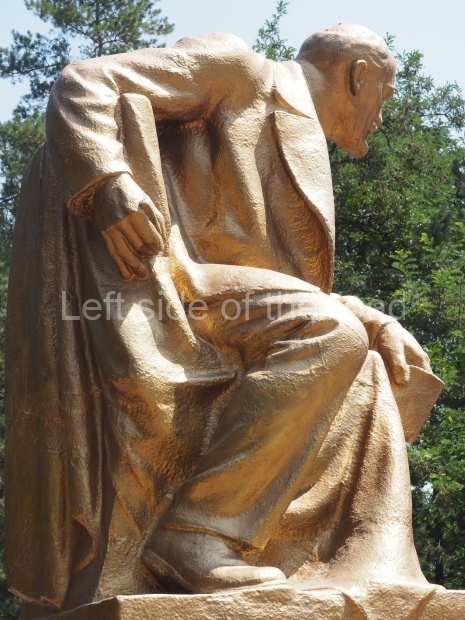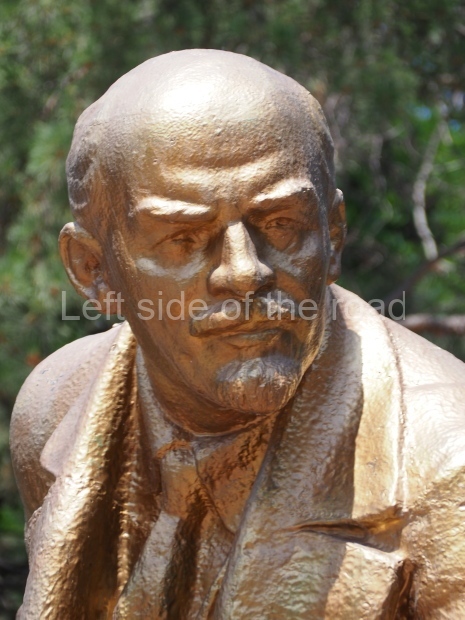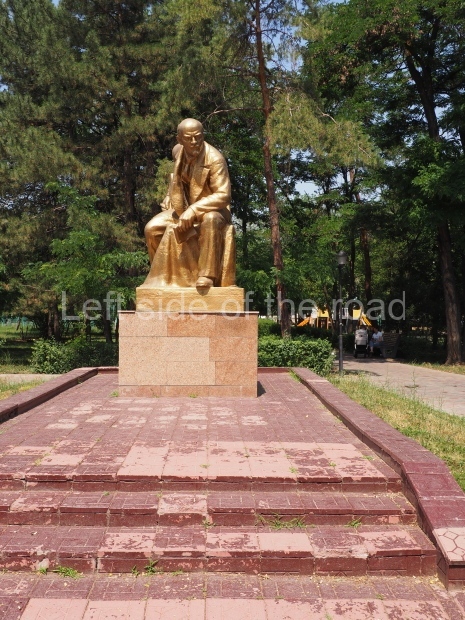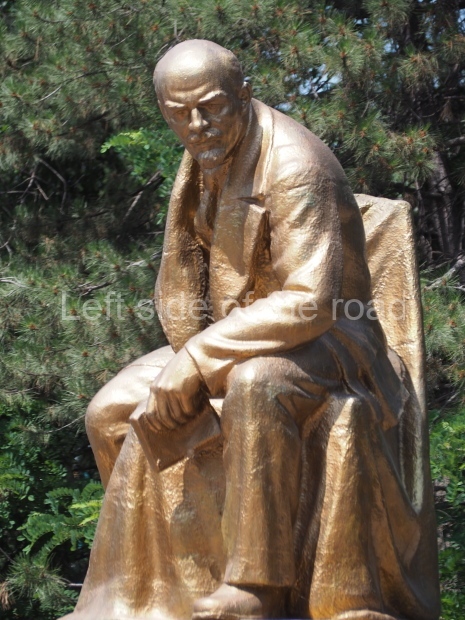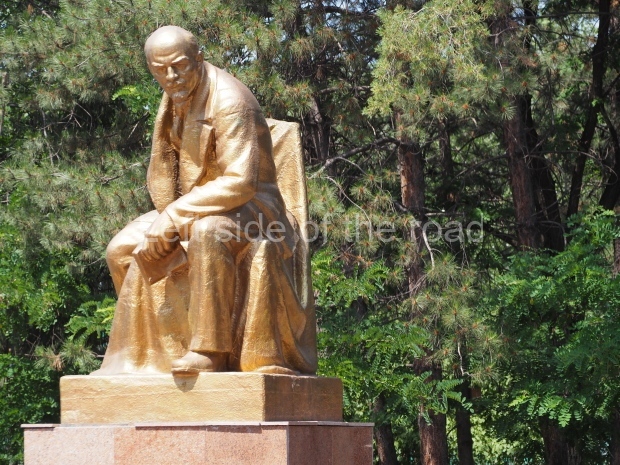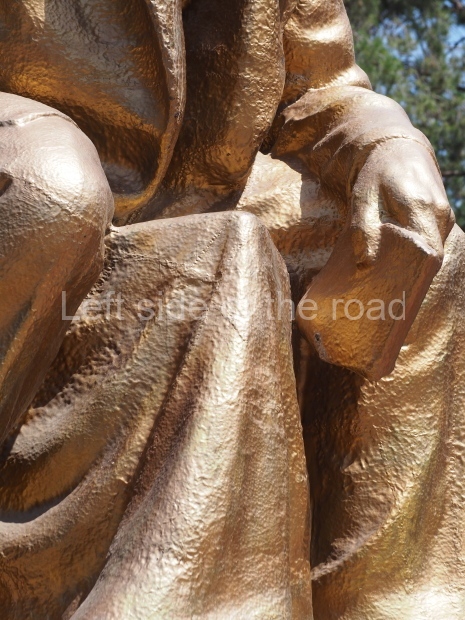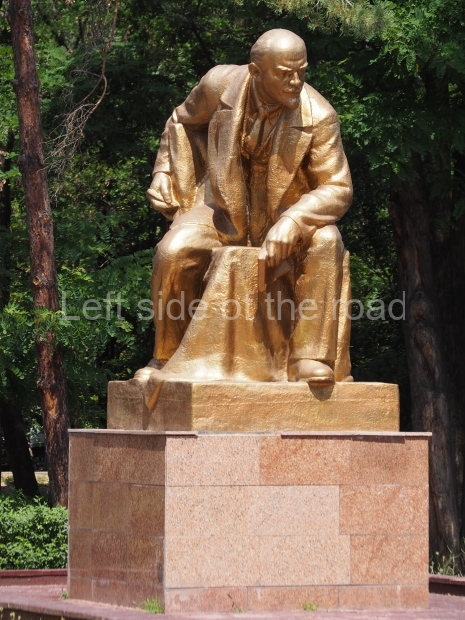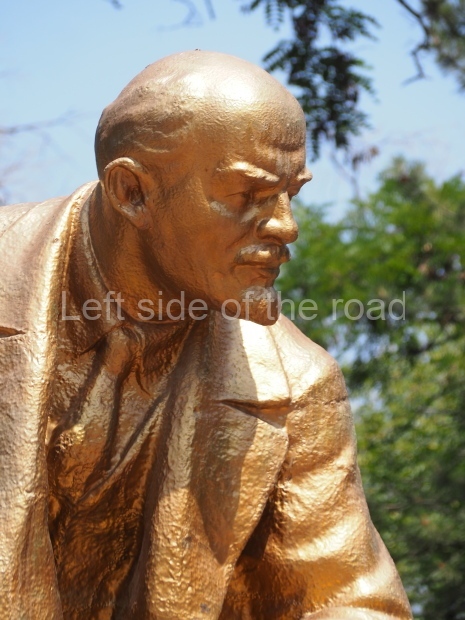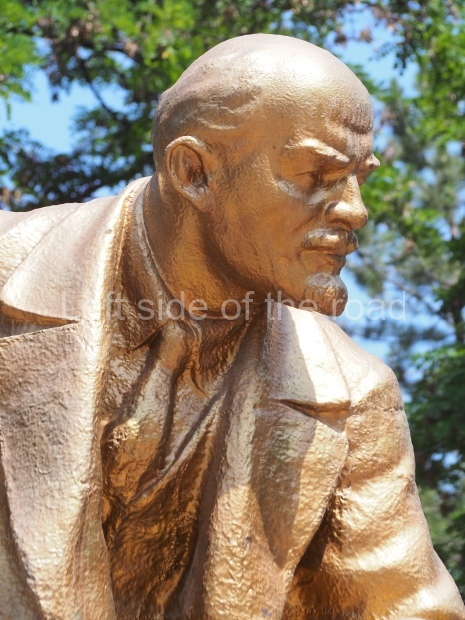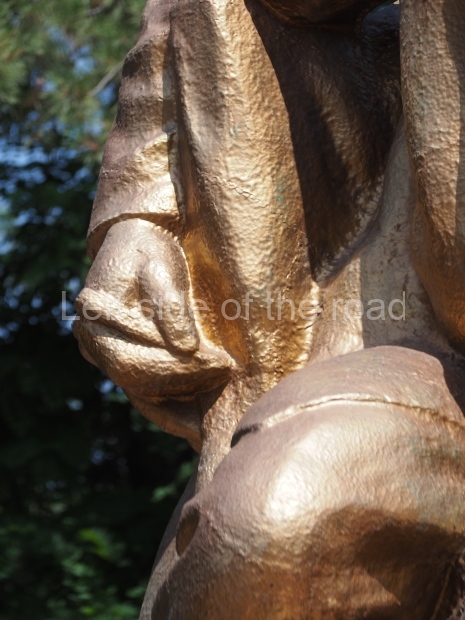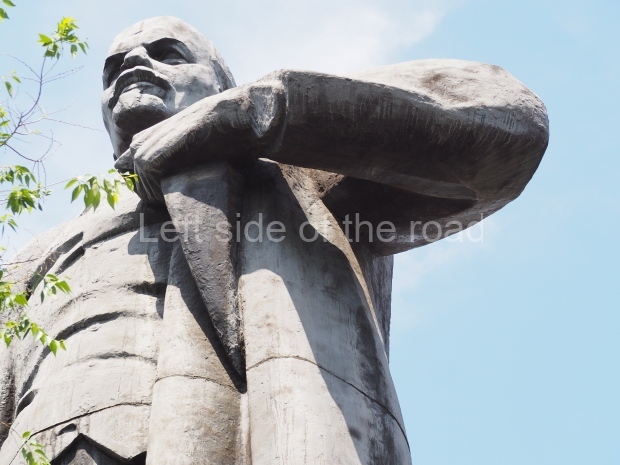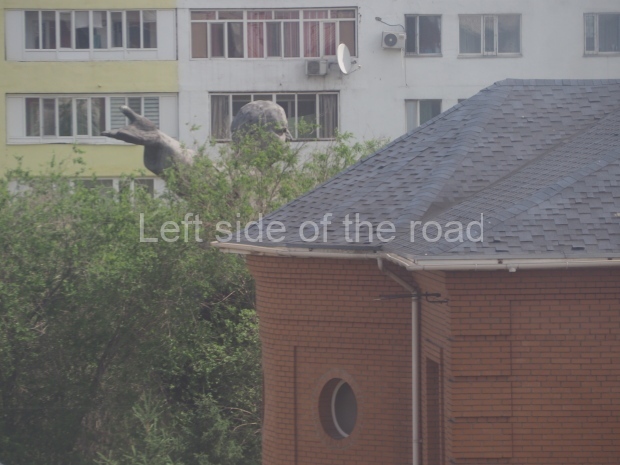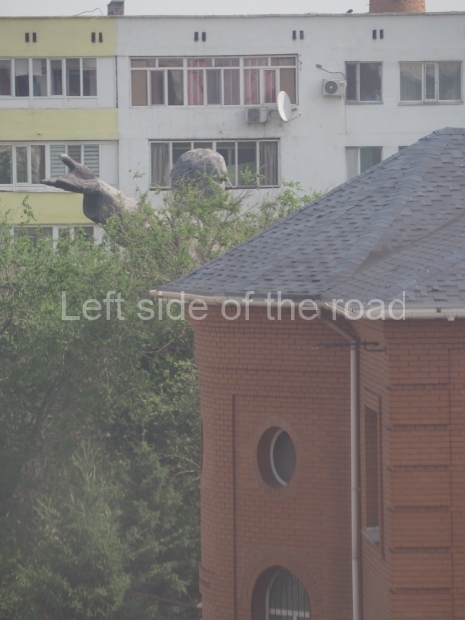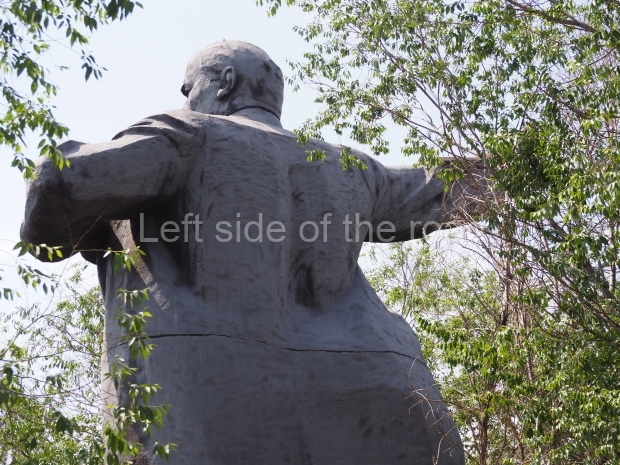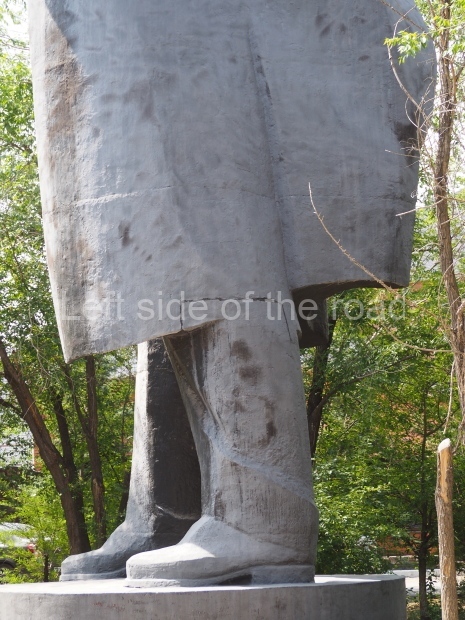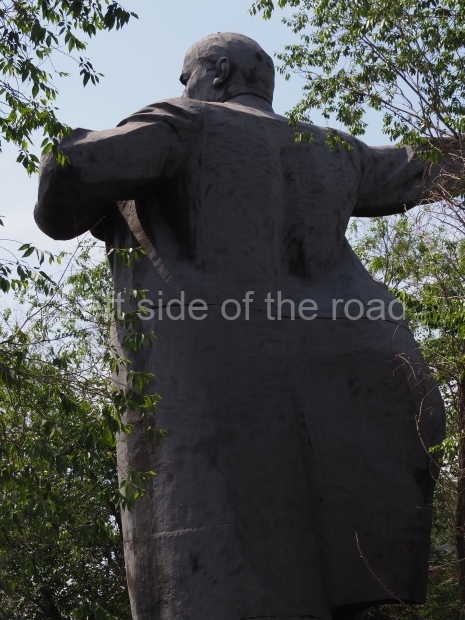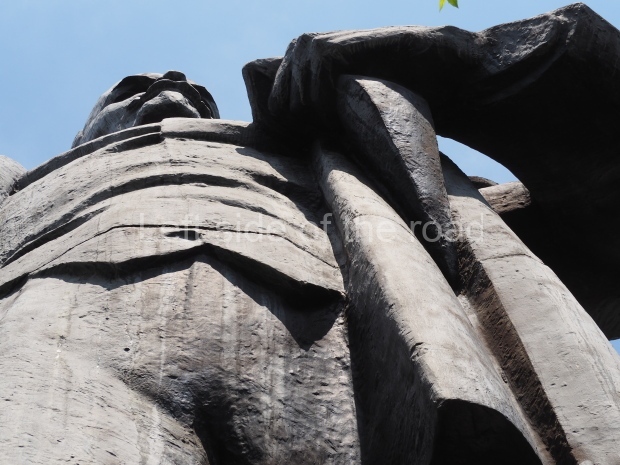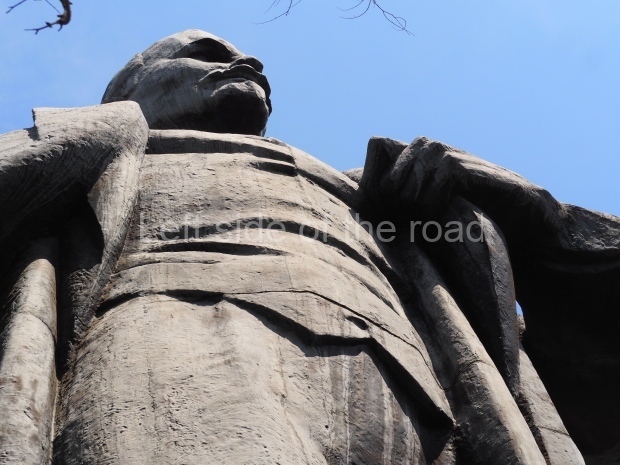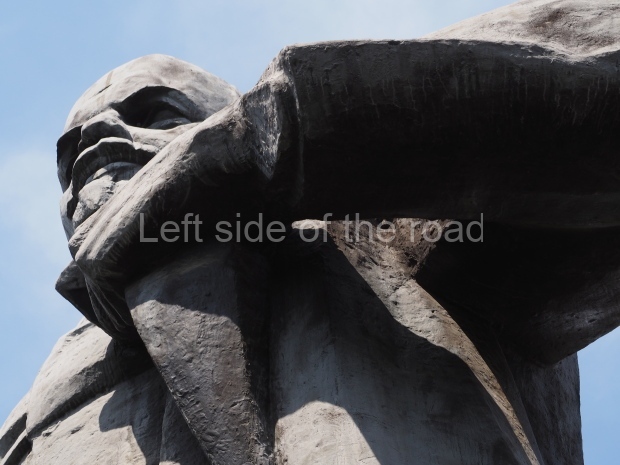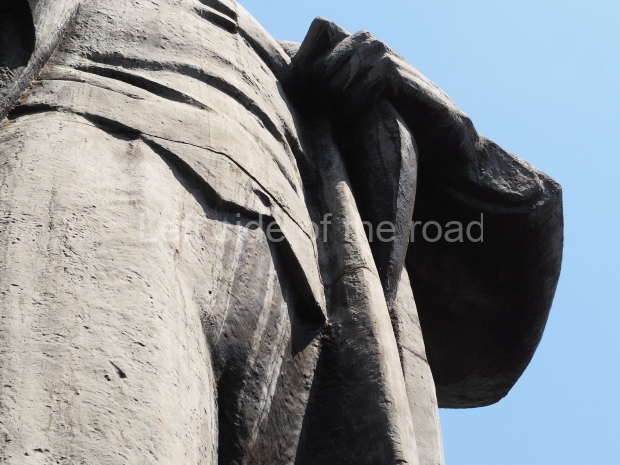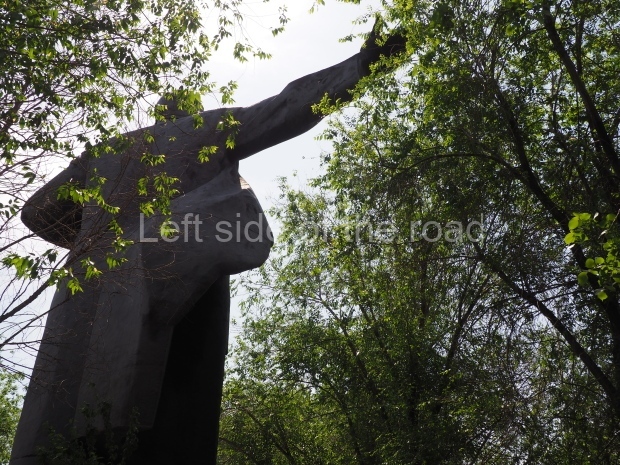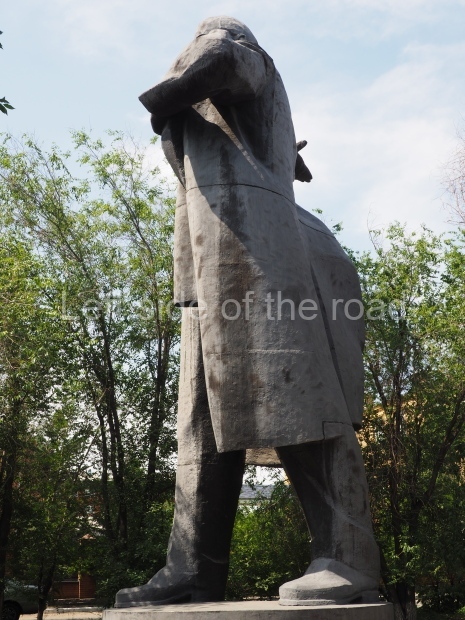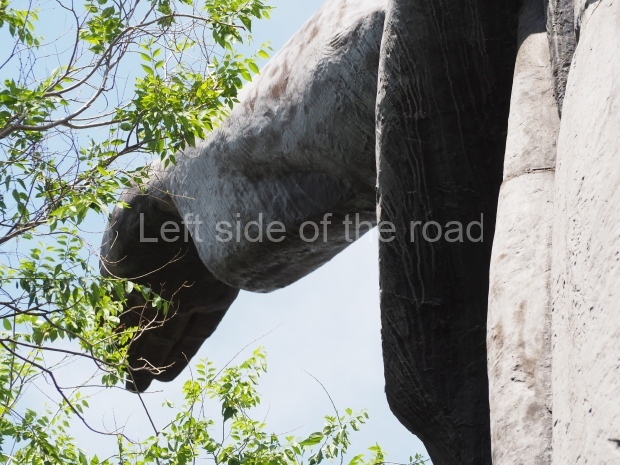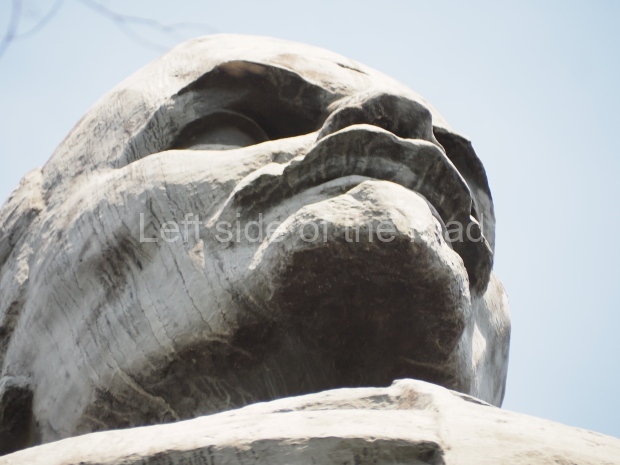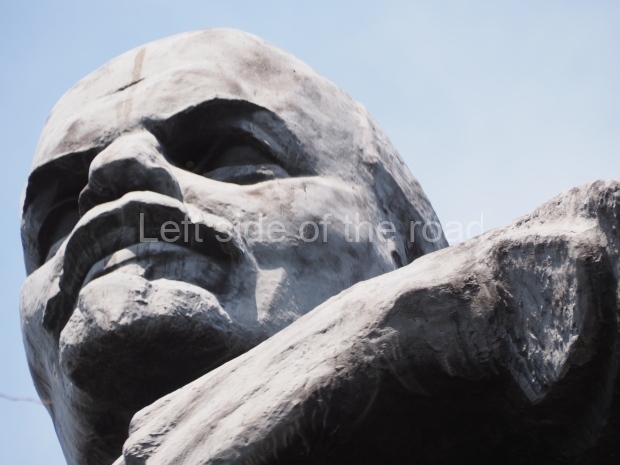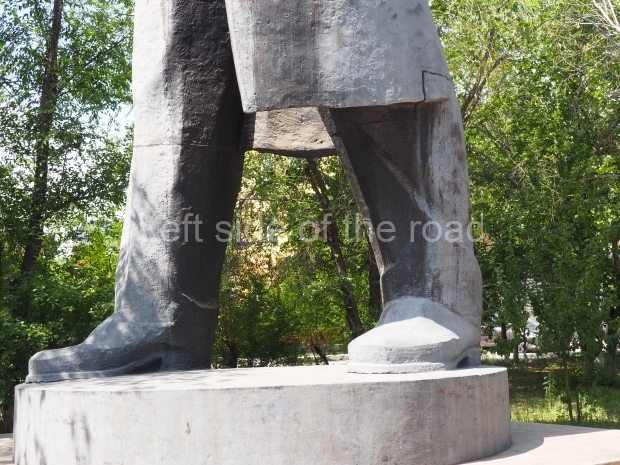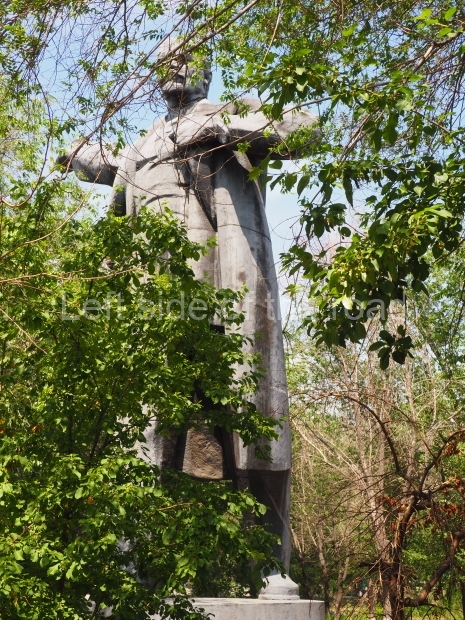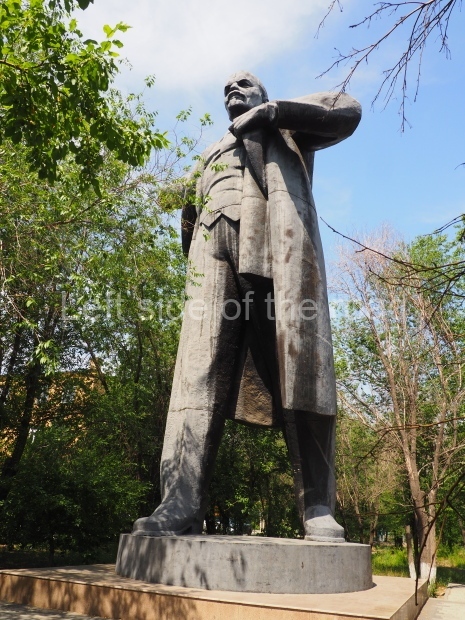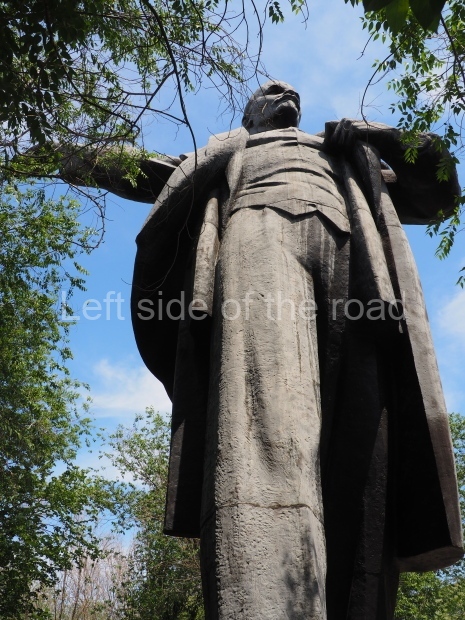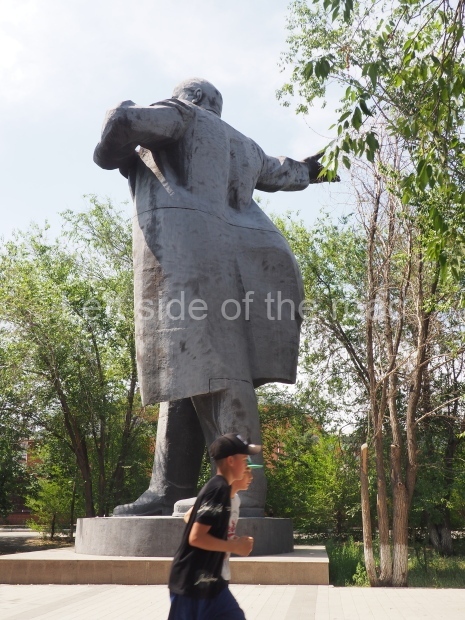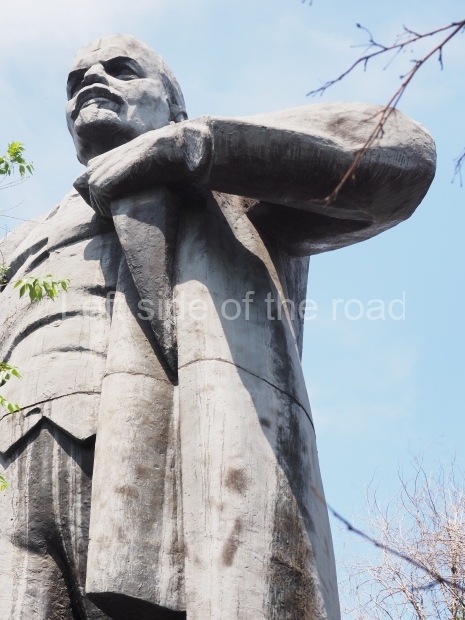VI Lenin in Karakol – Kyrgyzstan
The only remaining statue of VI Lenin in Karakol, a town on the southern shore of Lake Issyk Kul in eastern Kyrgyzstan, is one that stands facing the large, open square between the University building and the public park in the centre of the town.
Although Comrade Lenin looks down on the square where, in the Soviet past, there would have been various parades and celebrations, and was therefore placed in a ‘suitable’ location, the proportions make the statue look somewhat out of place.
The statue of VI Lenin is life size yet he has been placed on a very tall pillar making him look somewhat lost so high up. The fact that he is located at the end of an avenue across the road from the square further distances him from any events that would have taken place there – a square which itself stretches into the distance.
Further, the statue has suffered the ‘golden treatment’, having been given a coat of gold paint. As I see more of this treatment of Lenin statues I’m starting to wonder if this treatment is a sign of respect or just the reverse. I still haven’t been to decide which not having seen what the original was like, pre-1990 and the so-called ‘independence’ of Kyrgyzstan. That conclusion has been made more difficult due to the fact that (in the summer of 2025) statues of Lenin are being removed in Kyrgyzstan at an increasing rate.
Location;
On the corner of Gebze Street and Tynystanova Street.
GPS;
42.49161 N
78.40014 E


